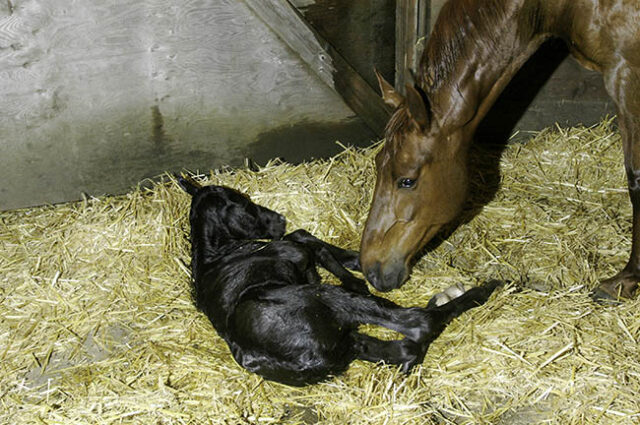Analysis by Christopher Hector: I always enjoy Jac Remijnse’s articles on Warmblood reading – well informed, well researched, well written – but Mr Remijnse has outdone himself with his article: In-Breeding & Line-Breeding in the Feb/Mar 2015 edition of Z Magazine. Why do we need line breeding? What are its benefits? What are the dangers?
I read the literature and listened to the presentations, but, as with most issues, I tend not to automatically accept things on the surface; I look deeper and almost always have questions. As a result, I wondered how accurate young horse competitions were, in general, at identifying young horses that could go on to compete at the upper levels. And I wondered if soundness and longevity were factors in the judging/scoring. I was most curious to see how close such programs came to meeting their mandates. Defining success The final presentation in Kentucky, given by Joachim Geilfus, was entitled ‘Young Horse Development in Germany’, which also includes similar competitions for ponies. Geilfus explained that the system was based on the welfare of the horse, training based on the German principles, and consistency at shows. That made sense to me, but when he shared the statistics from the nearly 1,000 horses per year at the Bundeschampionat in Warendorf, I had questions. He stated that just under 20 percent of the horses that compete in the young horse classes (in the three Olympic disciplines as well as driving) make it to the top in their sport. I personally thought 20 percent was rather a low figure as it meant that 80 percent did not reach the upper or international levels despite the ‘screening’ classes and judging factors prior to the Bundeschampionat.Right from the first paragraph the article is in full swing, using the analogy of a wall to suggest that line breeding is effective when it is close, but a danger when it is too close: ‘The most powerful instruments available to a breeder to book successful results are in-breeding and line-breeding. These allow him to connect bloodlines. You can see it as the mortar used for the construction of a house, and it makes that the stallions that are successively used in the creation of the individual are not stacked up like loose bricks. Too much mortar will result in concrete and unskillful bricklaying in bad quality. Balance is therefore the key word for the effective use of in-breeding and line-breeding. And when that balance is achieved, the relevant horse has a higher chance of developing into an exceptional showjumping horse. In breeding, such a horse has a better chance to make an indelible mark and to turn out to be a corner stone.’
Line-breeding as Remijnse defines it, ‘implies that one or more ancestors occur more than once in the pedigree of a horse and that the same ancestor occurs in the pedigree of both the sire and dam.’ And breeding with the same stallion on the top and bottom side of the pedigree, increases the chances of inheriting the valuable qualities of the stallion.
‘What is the purpose of linebreeding? As soon as an ancestor is represented more than once in the pedigree of a horse, there is a higher chance that the autosomal chromosomes carry a higher percentage of DNA of the relevant ancestor. The object of line-breeding is twofold. One is to reinforce the same DNA of an ancestor in the new product, which increases the chances that the genes in the DNA will be expressed. The other is to unite as many different parts of the DNA of the relevant ancestor as possible. A sire and a dam each pass on fifty percent of their autosomal chromosomes to their product. It is therefore theoretically possible that an ancestor passes on two different halves of his autosomal chromosomes to two different offspring. When you unite these two different offspring, parts of the different halves of the DNA are united in the new product. This is important because the total of the DNA forms the basis for the various qualities of the relevant ancestor. The more different parts of this DNA are united in the new product, the higher the chances that it will have the same combination of qualities as the relevant ancestor.’




